Phillip Lim and Wen Zhou: Rebuilding a Fashion Brand With Purpose Post-pandemic
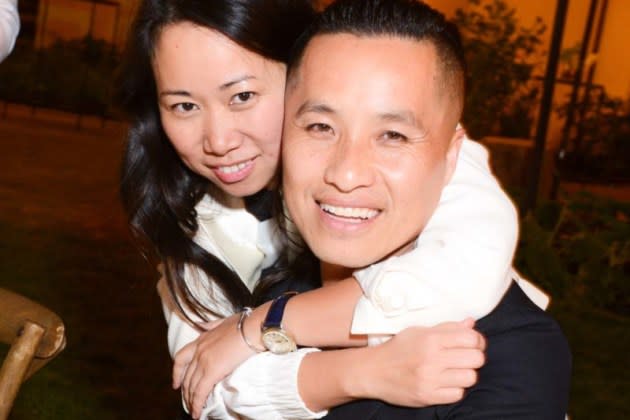
NEW YORK — Phillip Lim’s return to the runways in September was a triumphant moment for him, as his company has emerged stronger from the pandemic with a clear sense of purpose.
“It almost felt like if you can document this whole process from March 13, 2020, to now, and what culminated with the show, it’s like a universal triumphant story,” said Lim, in an interview at his offices at 18 East 16th Street in New York.
More from WWD
Phillip Lim to Be Awarded Honorary Doctor of Fine Arts From California State University, Long Beach
Los Angeles' Arts District Is Drawing a New Crowd of Retailers and International Fashion Companies
Having almost lost the entire company, Lim and his business partner and cofounder Wen Zhou, chief executive officer, spoke about how they survived the pandemic, the specific steps they took to hold on to the business, their return to New York’s runways, and how they’re rebuilding their fashion company with purpose in mind.
Taking a reporter through the first days of the pandemic, Lim recalls those days in March 2020 when they shut down the business to secure the safety and health of their team.
“I remember March 13, 2020, because it was the day after we decided to shut down operations for the safety of our team. I rode my bike to the office [Brookfield Place] to make sure it wasn’t just a bad dream. The streets were deserted. It is very surreal looking back. It was the beginning of the world changing. It was a few days after I went to speak on CNN about the burgeoning scapegoating of the AAPI [Asian American and Pacific Islander] community, which led to assaults that were escalating dramatically and tragically.”
Lim and his team were working on the pre-spring 2021 collection, and there were pins and notes and everything stuck there midway. “We just stopped it all. Everyone was in shock. We had to make this executive decision. Let’s regroup a couple of weeks later, but for now, let’s hunker down,” he recalled telling his team. He said they had to deal with the employees, some of whom didn’t want to come back and others who had to be let go. Lim also had to deal with store leases and office leases, goods that were in transit, and countless other things.
“How do you sustain this since there’s no going forward?” he recalled asking himself at the time. “We had to figure out what the business plan was, and what stores were doing. Where were we shipping this? You have all these clothes from the other side of the world coming in, and you’re like, ‘Can you hold that?'” he said. “It just came to a standstill. We had to think about how do you save the greater whole? We had to dip into our savings to secure health insurance for people. We had to ask people to take a cut in salaries. In the end, there were 40 people we kept. It wasn’t so drastic. About 25 to 30 percent had to go.”
Lim said the brand started making a line called Live Free — “at leisure” (not athleisure) clothes with antibacterial technology — meant to be lounged in at home. “We launched it from my living rooms in three weeks. It was inspired by street and sports. It was a DTC [direct-to-consumer] project under the Phillip Lim Live Free umbrella,” he said.
He said existing customers responded to the launch, but there were challenges selling DTC and a slim marketing budget.
“We did whatever we could to sustain and generate cash as an independent brand. Cash is king. We had to keep the virtual lights on. Everyone was working from home,” Lim said.
The company got out of its lease at Brookfield Place and leased two small studios in SoHo and Chinatown. “It was work from home, show up if you want. It was a fraction [of the space] that we used to have,” he said. He explained that he chose Chinatown because it was the center of the hate that was happening. “If I had to meet someone on the street, I would bring them to Chinatown. I just wanted to be part of the community that was being scapegoated by this health virus,” he said.
Zhou explained that during the pandemic, their main concern was trying to figure out how to stay in business.
“For the first year or few years into COVID, I was trying to figure out the supply chain situation, the team structure, the exiting of all the leases we could exit. It was a lot of energy to put into making sure we still have a good, solid ground to stand on,” she said. The brand had to exit stores in Los Angeles, London, Singapore and Hong Kong. “It was really tough. We also had this big overhead of space at Brookfield Place. We had to get out of that. There was a lot of stuff to do. We tried to keep the design team activated and still being creative. And then the attack on Asians, and that was a difficult layer for us to digest and make sense [of],” said Zhou.
During the pandemic, Lim started “New York Tougher Than Ever,” and raised money for inner-city youth, making T-shirts and sweatshirts and pins. “It became a city anthem,” he said.
“Basically I had time to insert myself where I was needed,” said Lim. He also got involved with the very first AAPI community fund, which called to “Stop Asian Hate.” Lim was a founder, and helped raise more than $7 million via GoFundMe for grassroots organizations in the AAPI community.
Lim also cofounded House of Slay with his friends Prabal Gurung, Laura Kim, Tina Leung and Ezra Williams. “We were a pandemic pod,” he said, and they asked themselves, “What do we need? We need superheroes. We should be the superheroes. We should use our platform to show people at this time, they can be their own superheroes.” They started House of Slay to influence everyday people to know that they can be everyday heroes. It was comic books and community service. “We would show up and help engage different businesses to also participate and use their platform for inner-city youth, painting murals,” said Lim.
He also spent a lot of time cooking.
“I’m home and I have an audience. How do I engage them? How do I influence them to be creative, keep busy, nourish themselves? I started ‘More Than Our Bellies’ [an Instagram account] online.” He cooked dishes and posted recipes and it led to making cutting boards with local makers. He found art framers who used to frame high-level art and were jobless and they started making cutting boards for him. He worked with his accessories designer, who is a potter, and made pottery and sold it online and raised money for different organizations.
Asked if he had ever participated in this kind of activism prior to 2020, Lim said, “No I didn’t. My life was all fashion. It was kind of stagnant in this fashion world. I hate to say this but as painful and traumatic as that memory still was, it gave me a purpose, it allowed me time to think about purpose. I never thought about purpose before. I was just being and just creating.”
Lim explained that when he started out nearly 20 years ago his purpose was to create beauty and create accessible beauty. Fast-forward to today, and he asks, “How do you center and build together the beauty of purpose?”
Lim’s brand has entered a new phase as he and Zhou strategize on how to make it an Asian American fashion brand for change. “We are really using our platforms to engage, to amplify, to uplift and to bring together communities. Using fashion — because fashion has such a huge reach — as a vehicle,” he said.
He’s working on a project called Creating Space that creates mental health conversations within the AAPI communities. “It’s such a stigma still. In these past years, people are traumatized and it needs to go somewhere,” he said. He volunteers to create space to have intergenerational conversations about trauma, mental health and well-being. About three months ago Lim and the Brooklyn Nets held an event at the Barclays Center in Brooklyn. More than 900 people RSVP’d to the event where Jenny T. Wang, PhD, author of “Permission to Come Home,” spoke.
“When you think of our culture, it’s a nonverbal culture. To express anything, you need to be comfortable being verbal and using language as a vehicle to heal. When you’re dealing with AAPI community, language is not how you heal, it is through other means,” he said. “They show you in food, they show you in caring, in getting you an education.
He explained about his culture, “If you ask the majority of AAPI folks if your parents ever say, ‘I love you,’ they’d say ‘no.’ It’s a huge awakening for this generation. They need to think in a different way, it’s OK.”
On Nov. 3, he’s going to L.A. to do the L.A. edition of the Creating Space event. “We’re going to go where the communities are,” he said.
Having sat out the last four years of fashion shows, Lim decided this season was the right time to return to the runway.
“It seemed there was a calling. New York City, our birthplace of this brand. There was a calling for a new sense of purpose. It felt like the right time to come back. We were more clear about who we were, why we do what we do, who we represent. Quite frankly, we missed the community and missed the creative fashion community,” said Lim.
Over the past few years, the designer has been showing with look books, informal gatherings at the brand’s New York shop on Great Jones Street, and at an art installation. “We were not ready to come back. Not ready, clarity-wise, but it takes money. As an independent brand, you are financing this. What was interesting about this show, there was so much sponsorship and community rallied for us to be able to do this show. In the past years, I’ve been using my time for community and this time around, community showed up for me. That’s why it was such an emotional show,” said Lim.
Among the guests were Awkwafina, Jenna Dewan, Kimora Lee Simmons, Teyana Taylor, Nicky Hilton, Leon Bridges and Fireboy, as well as friends such as Gurung, Kim and Leung. “It was the story of an underdog, an independent brand at the verge of losing it all and somehow finding himself within the rubble,” said Lim.
He believes that New York is starting to get back on its feet and there is a new sense of energy. “The mistake that people make is you try to compare it to other cities. It’s not comparable. New York should never be Paris. New York should never be Milan. New York should never be London. It’s such a misconstrued idea to make those kind of comparisons. For me, New York has always been the birthplace of independent young designers on the fringe, and on the edges, and having ideas and rolling up their sleeves and putting on makeshift shows, almost like guerrilla-style. Exciting things are coming out of New York City,” he said.
One thing that hasn’t changed is the type of clothing he’s designing. Lim said they’ve always offered a commercial and wearable collection. “It’s more imperative to be focused on who you are and be proud of that then try to be everything for everybody.” He said that in the casting this season, they tried to represent diversity and different age groups, which reflect his customers. “Our customers are not just teens and young 20s. They go from the teens to the 70s so we should represent them,” he said.
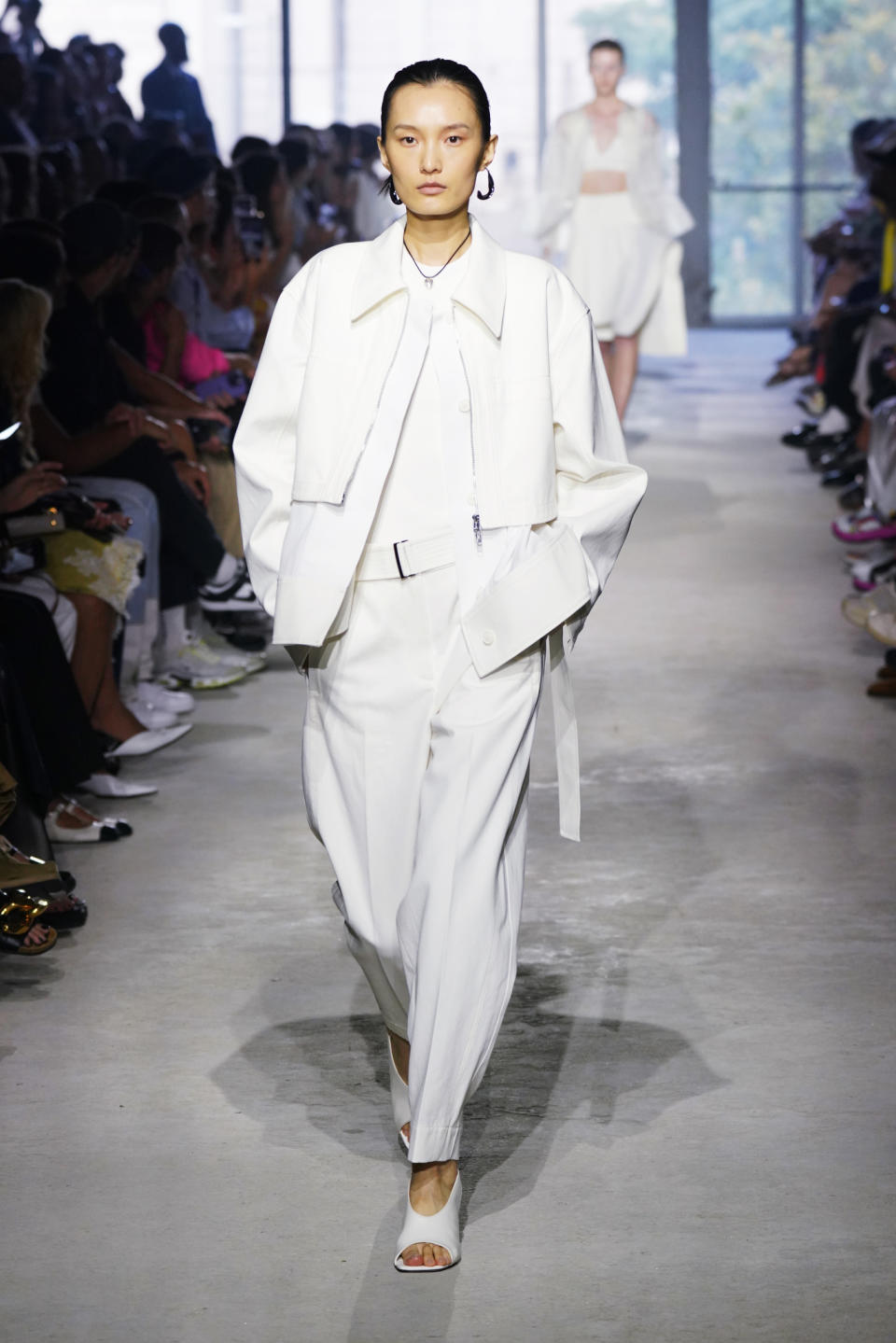
According to Zhou, their three biggest wholesale accounts are Shopbop and Saks and they just started working with Nordstrom again.
“I think for us the strategy is to really take care of our specialty stores. I just want to have really healthy specialty stores, great DTC and amazing business in our own stores,” she said. Among their 50 U.S. accounts are such stores as Mitchell’s, The Conservatory, Hive and Boyds. Typically, 3.1 Phillip Lim hangs with brands such as Proenza Schouler, Sacai and Jil Sander “so we become their entry designer,” said Zhou.
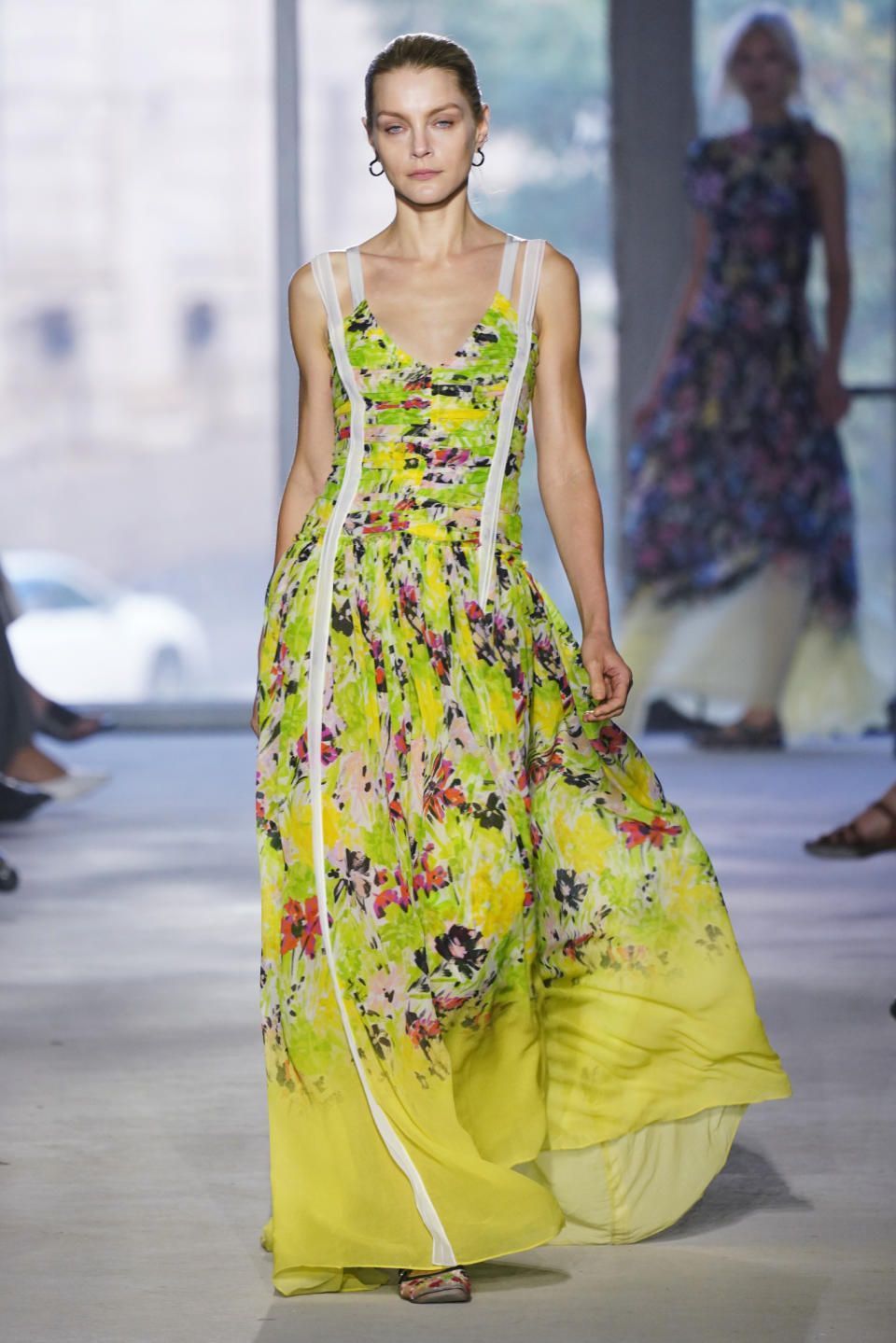
After growing really quickly during their first 12 years of business, in late 2016-17, they were beginning to struggle with their accessories business because of the fierce competition and price points, said Zhou
“We were trying to figure out our existence in that space and redefine that space. The other category we were struggling with was online. We started our business as a traditional wholesale business, so moving from wholesale to direct-to-consumer was a big learning curve. We were not equipped. With a challenging accessories market, we didn’t have the capital or resources or know-how to go after a capital-heavy intense direct-to-consumer business. Then COVID hit. That was the double whammy,” she said.
Lim explained that when they closed down during the pandemic, they were just learning how to do DTC. “We were late to the game on that, but at the same time, it was kind of a blessing. Everyone who was early was having issues with it. They’re going back to brick-and-mortar because it [e-commerce] is so expensive. We’ve always had it but we didn’t focus on it. Now, it’s an intentional focus and it’s proving itself to be working more,” he said.
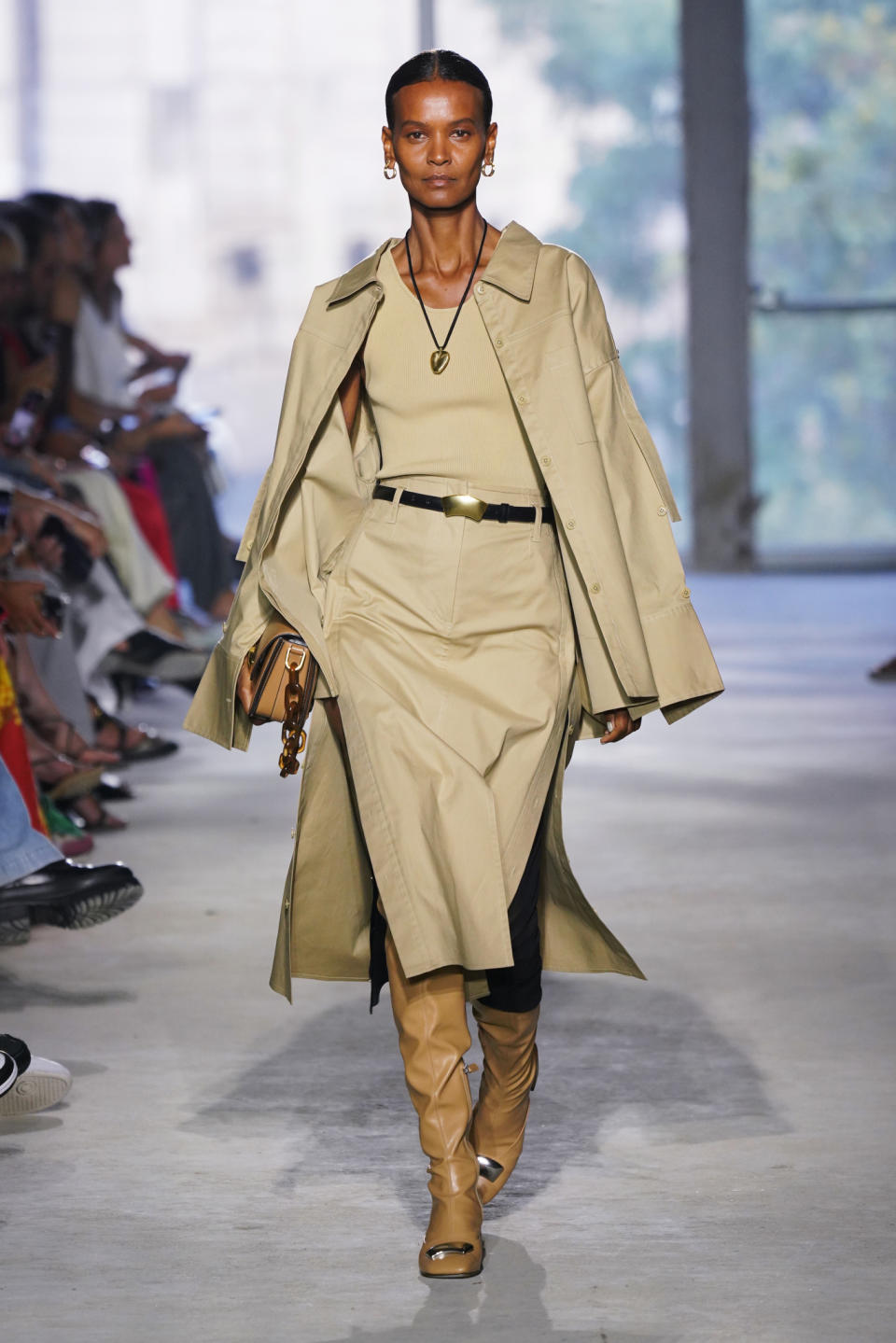
Zhou said they have since hired somebody to handle their DTC business, and in the past year that business is ahead 76 percent. She would like DTC to account for 60 percent of the business; it’s currently about 10 percent.
Zhou said the keys were looking at the business though the lens of DTC, rather than the lens of wholesale; having a team that really knows how to execute and know what they are advocating for; understanding and focusing on consumer needs, and lastly, having a great digital agency, Constellation agency. Right now, the website is their biggest store.
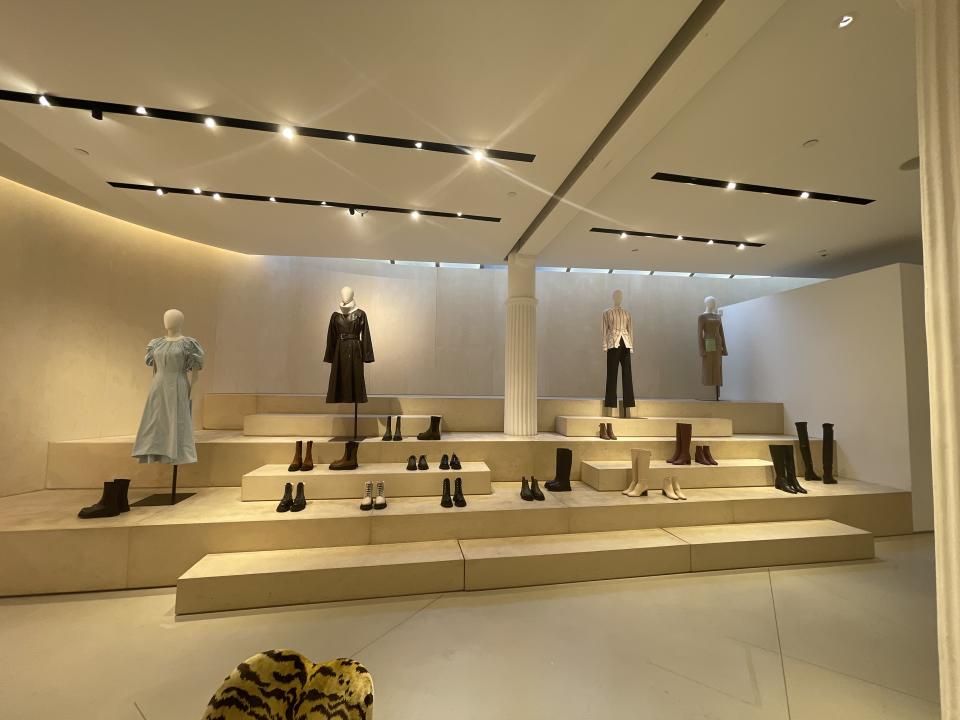
Discussing how important it is to him to inject his Asian heritage into the design of the collection, Lim said, “I am who I am. I am of Asian descent. I’m Chinese. My heritage and my culture is so deeply in what I do. It’s a value system. It’s the respect for cloth. It’s naturally inherently sustainable because everything’s considered and there’s no waste in how we approach things. I’m not going to create Asian fashions for you, but you’re going to feel the culture, you’re going to feel where I come from in the clothes and where it’s made. Everything is made in China. More important is that we center ourselves and be representative of the community as Asian American founders in an international fashion industry. We’re going to be for change.”
No longer considered one of the new kids on the block, it bothers him that people are always obsessed with who’s the next group of designers coming up.
“Yes, we’re in the second phase. What’s important for people to understand is everything’s so next and next and next. It’s kind of a fallacy to think there’s always going to be these prodigies and they’re going to figure everything out and make successful businesses. It takes time and it takes effort and it takes the industry to change the emphasis on new, next, new, next. That’s why there’s the issue of why we’re in this kind of trouble. It’s this incessant obsession with new, next. I’m not the first one saying this. For brands of our generation, there should be more resources and more funding, more attention. There’s a sweet spot. You become the bigger thing and you can give back to the industry. We’ll be 20 years old next year,” he said.
Lim considers his competitive set to be such designers as Proenza Schouler, Prabal Gurung, Jason Wu and Rodarte. “We did not know each other. We just ascended at the same time. They’ve all been able to carve out their own niche, and doing what they do and specializing.” He wishes that the industry would focus and figure out ways to help uplift brands such as his because they’re on the cusp.
“They’re should be more programming for us. There isn’t any,” he said.
Turning to what he’d like to see for his business, Lim said he’s in no rush to add more categories. “We’re regrowing our accessories business [handbags and footwear] so that’s a big focus.” They have a new I.D. bag group.
“This time around, how do we focus instead of trying to be everything for everybody. That’s the big lesson. We really grew too fast. You have to have discipline. We put men’s on hiatus right now. For me I want to focus on the womenswear.”
The brand has 12 freestanding stores around the world — two in the U.S., in New York and Waikiki, as well as five stores in Japan, two in Korea, two in Thailand and one in China. The company owns the China, Japan, New York and Waikiki stores; the other locations are partnerships/franchises.
Lim has seen an uptick in business because people know who he is and are relating to him given his various activities. “There’s more of a deep sense of loyalty and you cannot buy that. You can buy likes, you can buy a moment and hype market something to get attention, but that sense of loyalty takes time to garner and gain the trust of people,” he said. The brand currently has 1 million followers on Instagram.
With so much conversation about making luxury more expensive, Lim doesn’t understand that concept. “The price points [of some designer collections] are outrageous now. We stay with who we are. We work so hard to keep our price points at the same level. It’s a sense of reality that we romance,” he said.
For him, the sweet spot of his collection is between $295 and $795.
Turning to the topic of whether fashion shows are important and are they necessary, Lim said, “It is important. In this world of such noise and chaos and marketing antics, and everyone having different narratives, it’s our 15 minutes of silence to show the world what it is we’re actually trying to put out in the world. People see that.”
Zhou noted that they have had 1.2 billion impressions from the fashion show so far, just in the U.S. In the past, they’ve done shows in Paris and China. “The goal for the 20th anniversary is to be able to show in multiple places, starting in New York and perhaps one in Asia. We have to find the right opportunities, the right partnerships and the right message,” she said.
Looking ahead, the designer said he’s trying to balance his time between fashion and service. Earlier this year, Lim received an honorary doctor of humane letters degree from his alma mater, California State University, Long Beach, which pleased his mother to no end.
“My mom always wanted a doctor. I’m not a real one. I’m a fashion doctor. Let me fix your hem. You got zipper problems? Come to me,” he joked.
Overall, Zhou said business is “good” and profitable.
“Things are doing much better, especially after the show, we’re feeling the love from the community, we’re feeling the love from online, social, influencers and press. We’re super thankful. We feel the energy is really back at 3.1 Phillip Lim. We’re working so well together and it’s so fun,” said Zhou.
Asked where she sees the growth opportunities, Zhou said, “I just want to be steady and really think about our consumers and their needs and addressing and answering their needs. Ready-to-wear has been constant. Within the rtw category, our dresses and our trousers have been the number-one category. We make a mean pant. Recently, our denim has been doing so incredible. Our fashion denim, that’s where our sweet spot is. In the last four seasons, we’ve focused a bit more on denim offerings so the offering is robust. Denim, khakis, white poplin are the perfect New York sweet spot. We’ve also seen accessories coming back — the I.D.bag.”
Zhou said they also do shoes and make a Chinese slipper, as well as small leather goods and some belts. Within shoes, boots are their main offering. “We really have a sweet spot in comfort, fashion shoes,” she said.
“There are so many opportunities to grow. I also want to be cognizant of what’s happening and [make sure] the brand really lends itself to so many categories in the future. 3.1 Phillip Lim is really a lifestyle brand, it’s really not a clothing brand. We haven’t touched home, sports, wellness, fragrance, skin care, kids’, intimates yet. We have a lot to do. I’ve learned a lot over the pandemic. Maybe before the pandemic you’re confident and go, go, go. I don’t want to do that anymore. I have to slow down and do things intentionally and really well. And think about our business in decades, rather than in seasons. I don’t want the business about copying last year’s numbers. I want to have a really beautiful, holistic business where my teams are thriving, they’re excited to come here, our customers are excited about our product and there’s thoughtfulness,” said Zhou.
Does she see Lim’s activism as becoming a key platform for the brand?
“We’re such a fan of Phillip here. I love how he never stops. Everything that he does is so thoughtful and beautiful. Especially what he’s doing for mental health. For me, I don’t think of Phillip as an activist. I just think that he is so inspiring of who he is. The brand is 50 percent his. We celebrate what his passion is and how he wants to drive, and I’m on board,” said Zhou.
Zhou and Lim have established a clear delineation of responsibilities. “He does everything creative and I do everything business. He’s a creative person who understands business, and I’m a businessperson who understands creative. Plus we’re like brother and sister,” said Zhou.
What do you fight over?
“We don’t fight over anything specific. We’re both very protective of each other’s roles. We always say we fight for the brand, never the man. We have an incredible senior management team. When things need to be decided, it’s not based on emotions or ego, it’s just based on facts and data. And we make decisions together and that feels good.”
Best of WWD
